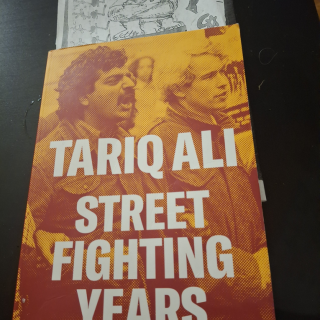Since the movie Twelve Years a Slave came out in 2013, there have been a number of excellent books published that focus on slavery outside of the south, and how tenuous freedom was for free born or manumitted blacks. Both categories of books force us to grapple with two issues rarely taught school children. The students in my African American History Before Emancipation class are always shocked to learn that slavery existed all over the United States and being free with the documents to prove it did not necessarily keep blacks from b eing forced into slavery through a variety of nefarious schemes. To be black and free in the north was like skating on incredibly thin ice. And thus, we come to the story of Henrietta Wood.
Wood was an enslaved woman taken from Kentucky, which was a slave state, to Ohio, a free state, and was given her freedom with papers to prove it. Ohio was the first state carved out of the land mass known as the Northwest Territory, and the Northwest Ordinance, written by Thomas Jefferson, forbade slavery in any states created from the territory. But as Ohio bordered on Kentucky, slavery spilled over into the state, and both the Ohio and United States governments generally looked the other way. Free blacks in Ohio had to constantly be on the lookout for unscrupulous people lest they be seized. The offer of a meal, a request for cold drink on a scorching hot day, or the promise of a job could be a ruse to kidnap free blacks and sell them into slavery. It was dangerous to talk to people one didn’t know, whether they were black or white.
Wood was free for five years but was kidnaped and taken back to Kentucky where she was forced back into slavery. She was then purchased by a man from Texas, who took her there where she remained enslaved until after the Civil War ended. Several years later, Wood moved back to Cincinnati and began the long and arduous task of seeking recompense, or what is now referred to as reparations.
This idea is not new. Before the Civil War ended, Union General William Tecumseh Sherman issued Special Field Order No. 15, which in part gave black families forty acres of land confiscated from the Confederacy. A second order was written so that they could also receive a mule. There was some question as to whether Sherman had the authority to do this, and so Radical Republicans in Congress drafted a law to formalize the agreement. President Andrew Johnson, described by Frederick Douglass as “no friend of the black man,” vetoed the legislation.
There was also a parallel movement in the 1890s designed to develop pensions for former slaves in order to reimburse them for years of unpaid labor, much like the military pension bill for Civil War Veterans. The first pension bill the formerly enslaved was introduced in Congress in 1890 by Walter Vaughn, a Democrat from Nebraska. The pension bill was done in by racism, the triumph of white supremacy, a country tired of the problems engendered by the Civil War, and opposition from federal agencies.
During the modern-day freedom movement, a number of organizations also demanded that the federal government pay reparations for slavery. Former Representative John Conyers (D-MI) introduced a bill in 1989 to establish a federal commission to examine the legacy of slavery, Jim Crow and discrimination, and to make recommendations to Congress about possible recompense. As regular as clockwork, Conyers introduced the bill at the beginning of every new session of Congress until he left in 2017. Even though the bill was about merely establishing a commission to study reparations, not guaranteeing reparations, the House of Representatives treated it like kryptonite, and the bill went nowhere.
McDaniel does a herculean job of mining archives and other sources to tell Wood’s story. We also learn a great deal about her kidnapper, Zebulon Ward, who liked to joke that he was the last person in America to pay for a slave. It’s interesting that Ward had also been the head of state prison systems in Arkansas and Kentucky. He was one of the first men to engage in the notorious convict leasing system, the remnants of which are still present.
Wood filed her lawsuit in the federal court in 1870 and asked for twenty thousand dollars. In 1878, Ward was ordered by the court to pay Wood two thousand five hundred dollars, four hundred of which went to her attorney. It was an enormous sum at that time. She moved to Chicago to be with her son, Arthur Sims. Even though it was much less than she had asked for, the money enabled her to financially assist him and his family. He bought a house in Chicago, went to law school–at what is now Northwestern University–and established a law practice. There is no doubt his family and their progeny were able to gain a foothold in America because of the settlement.
In Sweet Taste of Liberty, McDaniel asks us to wrestle mightily with a number of questions. Should the United States pay reparations to the heirs of American slaves? How would descendants be identified? How much should be paid? Which is more valuable, the money by itself, or money and an admission from the United States that slavery was wrong, and that the entire country is collectively sorry for it?
McDaniel weaves a complex and compelling story with great aplomb. Sweet Taste of Liberty is fantastic addition to the canon of slavery.



